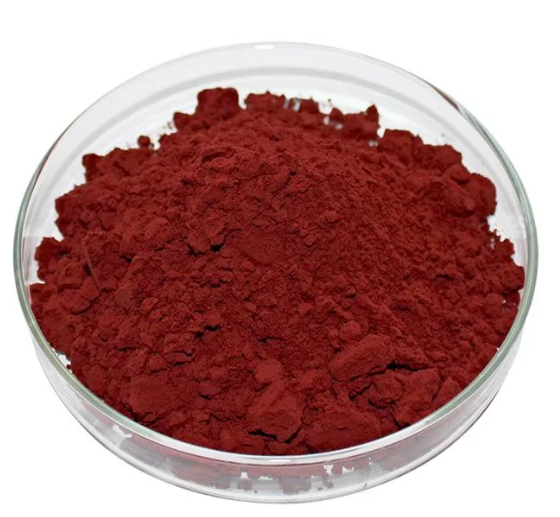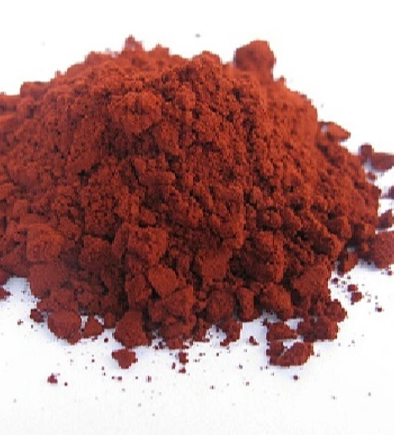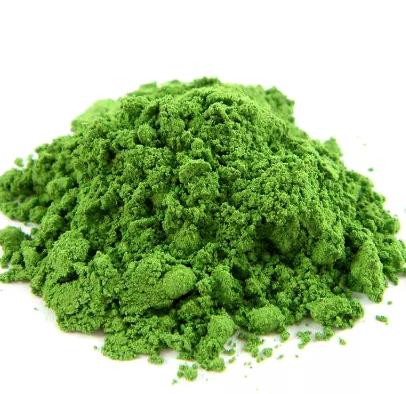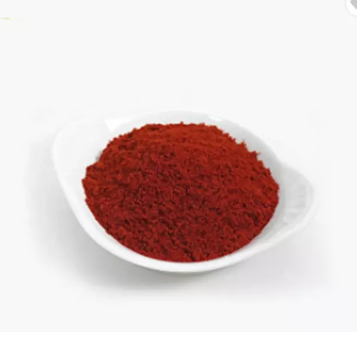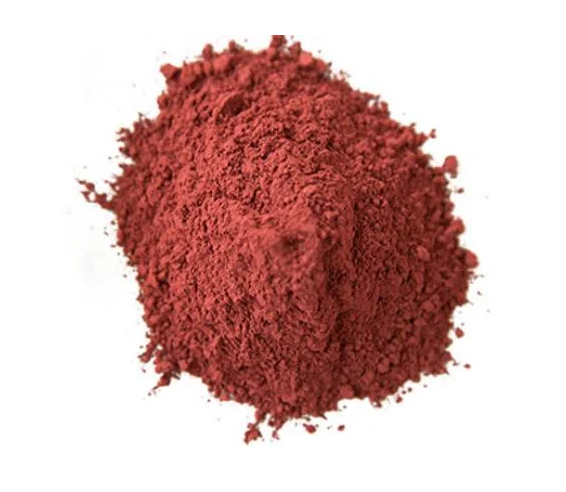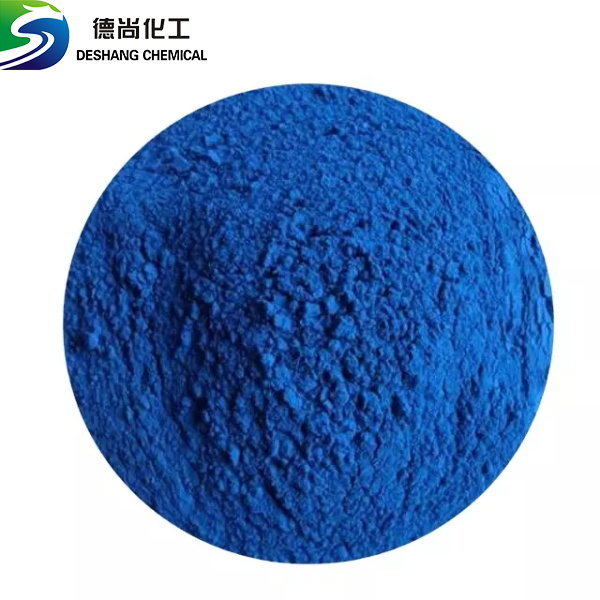

GARDENIA YELLOW CAS 94238-00-3
——————
CAS number : 94238-00-3
molecular formula : C44H64O24
EINECS : 601-063-2
——————
Email : info@deshangchem.com
Mobile : +86-13153039501
TEL : +86-531-88752665
CAS number:94238-00-3
molecular formula:C44H64O24
molecular weight:976.96456
EINECS number:601-063-2
English synonyms
GARDENIA YELLOW;Crocine;GARDENIAPIGMENT;Kuchinashi yellow;Rikecolor Kuchinashi 20;Gardenia Yellow Solution,1000ppm;Gardenia yellow Solution in Methanol, 100μg/mL;Kuchinashi yellow/Gardenia yellow
Related categories
Standard substance-reference substance; food additive; pharmaceutical raw material; plant extract standard substance; food coloring; flavor and fragrance; plant extract; colorant; analytical reference substance; natural pigment-gardenia yellow; Dyes and Pigments; Colorants; Chinese medicine control product; standard substance; reference substance, standard substance; reference substance; daily chemical raw material; standard substance, reference substance; standard substance - traditional Chinese medicine standard substance; ; chemical reagents
Introduction
Gardenia yellow pigment is an excellent natural pigment extracted and isolated from the fruit of Gardenia. It has bright color, non-toxicity, good stability and strong dyeing ability. and anti-cancer health benefits.
Chemical properties
Solubility: easily soluble in polar solvents such as water and ethanol, but insoluble in non-polar solvents such as benzene and gasoline. Since the crocin in the gardenia yellow pigment is an acidic component, the pigment is more soluble in alkaline solution.
Form: yellow object, liquid or pasty or even yellow to orange-yellow crystalline powder.
Spectral characteristics: There are three absorption peaks in the aqueous solution of gardenia yellow pigment in the ultraviolet-visible light region: 238, 325, and 440 nm, which are the characteristic absorption peaks of gardeniside, chlorogenic acid, crocin and crocetin. The aqueous solution has a maximum absorption peak at 440 nm.
Use
Gardenias and fruits have been used as dyes since ancient times. It is customary for the ethnic minorities in Yunnan to dye rice cakes with gardenias, and the Japanese folk use gardenia extracts to dye longevity noodles.
● Food Industry
Traditionally, gardenia yellow pigment is mainly used for the coloring of flour products. In recent years, using its good dyeability to protein and starch, gardenia yellow pigment has also been widely used in candy, sweet money, ice cream and other foods. Applications. In the comprehensive development of gardenia yellow pigment, Japan has already mixed gardenia yellow pigment and gardenia blue pigment into green pigment, and obtained good economic benefits. Gardenia yellow pigment has excellent dyeing ability to protein, starch, etc., and can be widely used in various foods such as cakes, candies, flour, beverages, jelly, biscuits, ice cream and so on.
● Printing and dyeing industry
Xi Deng et al. studied the dyeing of silk tone and nylon fabrics by gardenia yellow pigment, and described the change of tone in dyeing in detail, which laid the foundation for gardenia yellow pigment in the field of fabric dyeing.
● Cosmetics industry
Liu Xinmin discussed the feasibility of using gardenia yellow pigment in cosmetics. He believed that gardenia yellow pigment already had the conditions to be used in the cosmetics industry, and discussed the specific conditions and scope of its application in the cosmetics industry.
● Pharmaceutical industry
Gardenia yellow pigment not only contains pigment components that can be colored, but also contains saffron acid and gardeniside with high medical value and high price such as blood-reconciling, promoting blood circulation, removing blood stasis, relieving pain, and reducing blood pressure, which can be applied to the pharmaceutical industry. .
Production method
● water extraction
Gardenia yellow pigment contains a hydrophilic group and is easily soluble in water. The pigment can be extracted by soaking in water. The water extraction method extracts 20%~50% of the slurry by crushing, degreasing, leaching, filtering and concentrating. The method has the advantages of simple process, low investment and low production cost, but the pigment produced by this method has low purity and poor appearance quality. The product is 20%~50% slurry, which is difficult to refine and has little use value.
● organic solvent extraction
Since both gardenia yellow and geniposide are easily soluble in water and lower alcohols, alcohol-water mixed solvent is selected as the leaching agent. By comparing the extraction of gardenia yellow pigment and geniposide with different solvents at different temperatures, it was found that the extraction effect of 50% (volume fraction) methanol-water mixed solvent was better at room temperature.
● microwave extraction
Yao Zhongming et al. studied the extraction process of gardenia yellow pigment. The traditional extraction process was improved, that is, the optimal process conditions were determined by single factor and orthogonal experiments; the process conditions for extracting gardenia yellow pigment by microwave method were studied. The time is 80s, the number of extraction stages is 2, and the ratio of material to liquid is 1:2. The extraction rate of pigment is 98.4%. better than traditional craftsmanship.
● Ultrasonic extraction
Gao Li et al. studied the ultrasonic-assisted extraction of gardenia pigment. Compared with the traditional extraction process, this process has the advantages of high extraction rate, high color price, high purity, saving raw materials, saving time, room temperature extraction, and good product quality. Especially suitable for the extraction of thermally unstable substances.
● Supercritical Extraction (SFE) Method
Zhang Dequan et al. focused on the effects of extraction pressure, temperature, time, CO2 flow, and entraining agent on the OD ratio of gardenia yellow pigment under supercritical conditions in the study of using CO2SFE technology to extract gardenia yellow pigment. The results show that high temperature , high pressure and adding entraining agent will help to reduce the ratio of OD value of gardenia yellow pigment to achieve the purpose of refining.
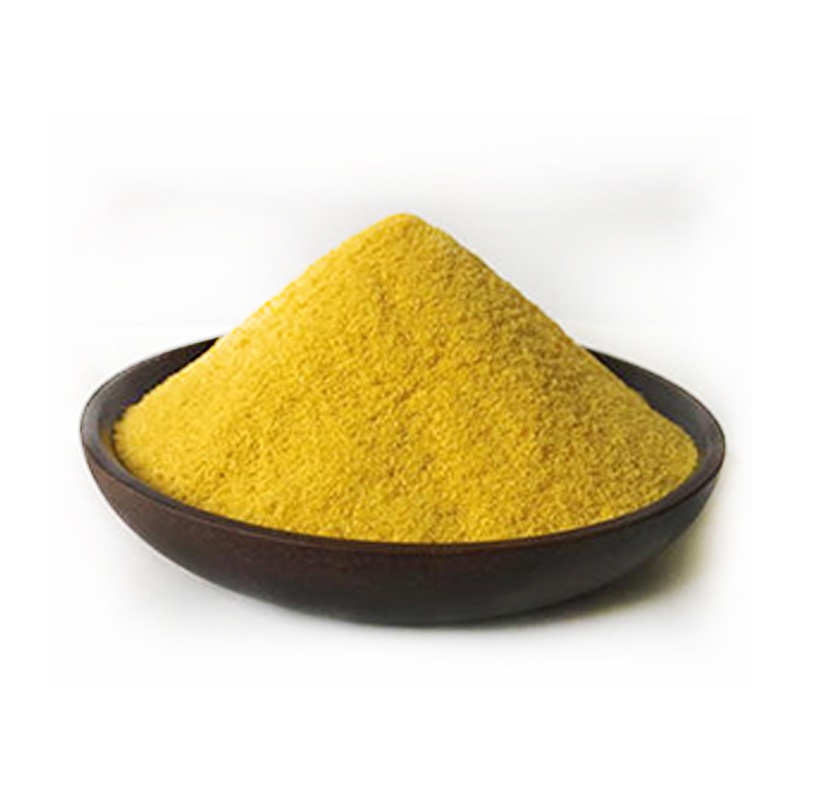
GARDENIA YELLOW CAS 94238-00-3
CAS number:94238-00-3
molecular formula:C44H64O24
molecular weight:976.96456
EINECS number:601-063-2
English synonyms
GARDENIA YELLOW;Crocine;GARDENIAPIGMENT;Kuchinashi yellow;Rikecolor Kuchinashi 20;Gardenia Yellow Solution,1000ppm;Gardenia yellow Solution in Methanol, 100μg/mL;Kuchinashi yellow/Gardenia yellow
Related categories
Standard substance-reference substance; food additive; pharmaceutical raw material; plant extract standard substance; food coloring; flavor and fragrance; plant extract; colorant; analytical reference substance; natural pigment-gardenia yellow; Dyes and Pigments; Colorants; Chinese medicine control product; standard substance; reference substance, standard substance; reference substance; daily chemical raw material; standard substance, reference substance; standard substance - traditional Chinese medicine standard substance; ; chemical reagents
Introduction
Gardenia yellow pigment is an excellent natural pigment extracted and isolated from the fruit of Gardenia. It has bright color, non-toxicity, good stability and strong dyeing ability. and anti-cancer health benefits.
Chemical properties
Solubility: easily soluble in polar solvents such as water and ethanol, but insoluble in non-polar solvents such as benzene and gasoline. Since the crocin in the gardenia yellow pigment is an acidic component, the pigment is more soluble in alkaline solution.
Form: yellow object, liquid or pasty or even yellow to orange-yellow crystalline powder.
Spectral characteristics: There are three absorption peaks in the aqueous solution of gardenia yellow pigment in the ultraviolet-visible light region: 238, 325, and 440 nm, which are the characteristic absorption peaks of gardeniside, chlorogenic acid, crocin and crocetin. The aqueous solution has a maximum absorption peak at 440 nm.
Use
Gardenias and fruits have been used as dyes since ancient times. It is customary for the ethnic minorities in Yunnan to dye rice cakes with gardenias, and the Japanese folk use gardenia extracts to dye longevity noodles.
● Food Industry
Traditionally, gardenia yellow pigment is mainly used for the coloring of flour products. In recent years, using its good dyeability to protein and starch, gardenia yellow pigment has also been widely used in candy, sweet money, ice cream and other foods. Applications. In the comprehensive development of gardenia yellow pigment, Japan has already mixed gardenia yellow pigment and gardenia blue pigment into green pigment, and obtained good economic benefits. Gardenia yellow pigment has excellent dyeing ability to protein, starch, etc., and can be widely used in various foods such as cakes, candies, flour, beverages, jelly, biscuits, ice cream and so on.
● Printing and dyeing industry
Xi Deng et al. studied the dyeing of silk tone and nylon fabrics by gardenia yellow pigment, and described the change of tone in dyeing in detail, which laid the foundation for gardenia yellow pigment in the field of fabric dyeing.
● Cosmetics industry
Liu Xinmin discussed the feasibility of using gardenia yellow pigment in cosmetics. He believed that gardenia yellow pigment already had the conditions to be used in the cosmetics industry, and discussed the specific conditions and scope of its application in the cosmetics industry.
● Pharmaceutical industry
Gardenia yellow pigment not only contains pigment components that can be colored, but also contains saffron acid and gardeniside with high medical value and high price such as blood-reconciling, promoting blood circulation, removing blood stasis, relieving pain, and reducing blood pressure, which can be applied to the pharmaceutical industry. .
Production method
● water extraction
Gardenia yellow pigment contains a hydrophilic group and is easily soluble in water. The pigment can be extracted by soaking in water. The water extraction method extracts 20%~50% of the slurry by crushing, degreasing, leaching, filtering and concentrating. The method has the advantages of simple process, low investment and low production cost, but the pigment produced by this method has low purity and poor appearance quality. The product is 20%~50% slurry, which is difficult to refine and has little use value.
● organic solvent extraction
Since both gardenia yellow and geniposide are easily soluble in water and lower alcohols, alcohol-water mixed solvent is selected as the leaching agent. By comparing the extraction of gardenia yellow pigment and geniposide with different solvents at different temperatures, it was found that the extraction effect of 50% (volume fraction) methanol-water mixed solvent was better at room temperature.
● microwave extraction
Yao Zhongming et al. studied the extraction process of gardenia yellow pigment. The traditional extraction process was improved, that is, the optimal process conditions were determined by single factor and orthogonal experiments; the process conditions for extracting gardenia yellow pigment by microwave method were studied. The time is 80s, the number of extraction stages is 2, and the ratio of material to liquid is 1:2. The extraction rate of pigment is 98.4%. better than traditional craftsmanship.
● Ultrasonic extraction
Gao Li et al. studied the ultrasonic-assisted extraction of gardenia pigment. Compared with the traditional extraction process, this process has the advantages of high extraction rate, high color price, high purity, saving raw materials, saving time, room temperature extraction, and good product quality. Especially suitable for the extraction of thermally unstable substances.
● Supercritical Extraction (SFE) Method
Zhang Dequan et al. focused on the effects of extraction pressure, temperature, time, CO2 flow, and entraining agent on the OD ratio of gardenia yellow pigment under supercritical conditions in the study of using CO2SFE technology to extract gardenia yellow pigment. The results show that high temperature , high pressure and adding entraining agent will help to reduce the ratio of OD value of gardenia yellow pigment to achieve the purpose of refining.
Team Presentation

